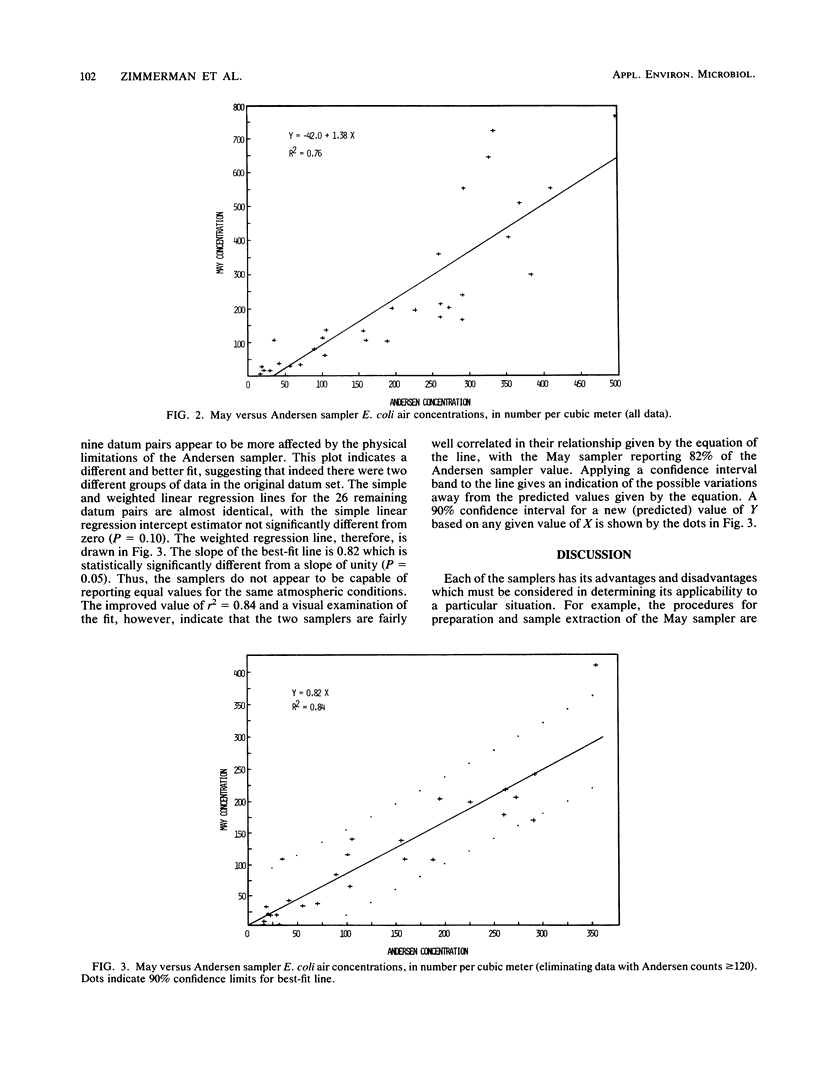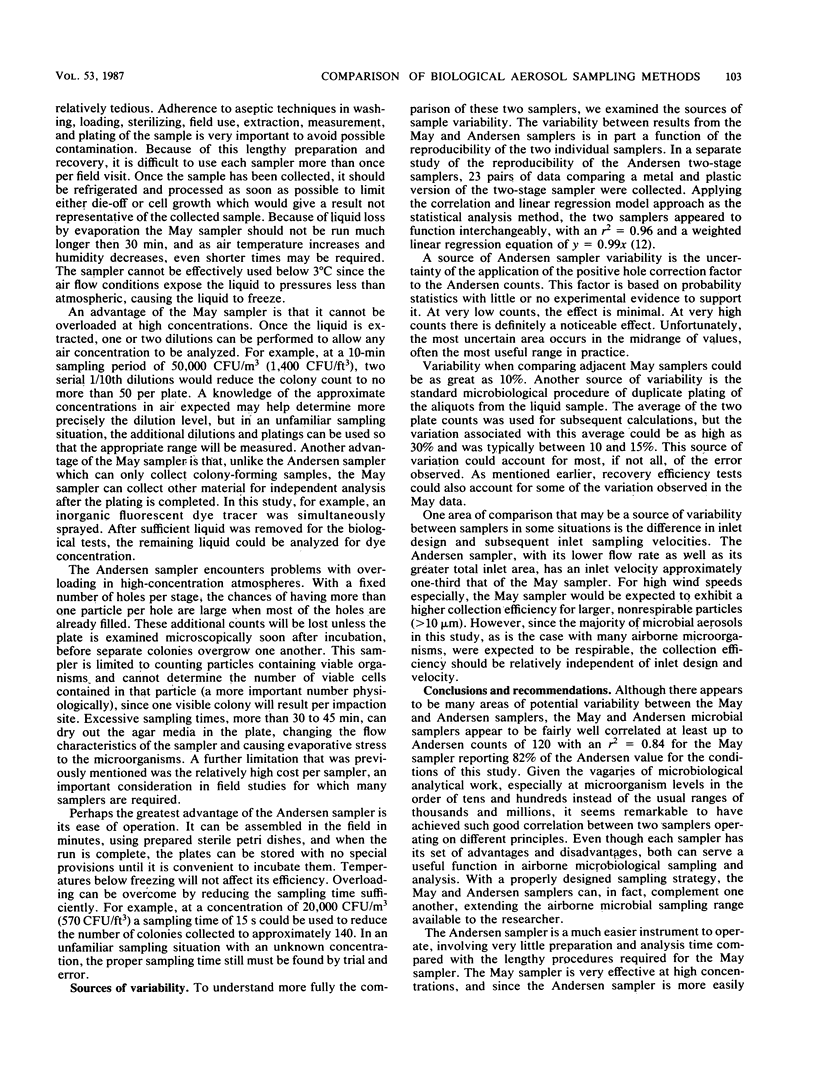Abstract
Two biological aerosol samplers, the Andersen two-stage microbial impactor and the May three-stage glass impinger, were examined to determine the benefits and effectiveness of the May sampler compared with the Andersen sampler, one of the most widely accepted samplers. Side-by-side samples were collected during simulated wastewater spray irrigation dispersion studies. Escherichia coli colony counts and air concentrations were statistically treated to determine the dependability of the May results with respect to the Andersen results. After data pairs containing potentially overloaded Andersen counts were eliminated, a linear regression of the remaining data was performed. It indicates that although the May sampler reports 82% of the Andersen sampler value, the correlation between the two samplers is good with an r2 value of 0.84. This comparison indicates that although there are differences between the two samplers, they do give comparable results and that when both are used in a sampling program, they tend to complement each other.
Full text
PDF





Images in this article
Selected References
These references are in PubMed. This may not be the complete list of references from this article.
- ANDERSEN A. A. New sampler for the collection, sizing, and enumeration of viable airborne particles. J Bacteriol. 1958 Nov;76(5):471–484. doi: 10.1128/jb.76.5.471-484.1958. [DOI] [PMC free article] [PubMed] [Google Scholar]
- Hickey J. L., Reist P. C. Health significance of airborne microorganisms from wastewater treatment processes. Part I: Summary of investigations. J Water Pollut Control Fed. 1975 Dec;47(12):2741–2757. [PubMed] [Google Scholar]
- Hickey J. L., Reist P. C. Health significance of airborne microorganisms from wastewater treatment processes. Part II: Health significance and alternatives for action. J Water Pollut Control Fed. 1975 Dec;47(12):2758–2773. [PubMed] [Google Scholar]
- Lembke L. L., Kniseley R. N., van Nostrand R. C., Hale M. D. Precision of the all-glass impinger and the andersen microbial impactor for air sampling in solid-waste handling facilities. Appl Environ Microbiol. 1981 Aug;42(2):222–225. doi: 10.1128/aem.42.2.222-225.1981. [DOI] [PMC free article] [PubMed] [Google Scholar]
- May K. R. Multistage liquid impinger. Bacteriol Rev. 1966 Sep;30(3):559–570. doi: 10.1128/br.30.3.559-570.1966. [DOI] [PMC free article] [PubMed] [Google Scholar]
- Sorber C. A., Bausum H. T., Schaub S. A., Small M. J. A study of bacterial aerosols at a wastewater irrigation site. J Water Pollut Control Fed. 1976 Oct;48(10):2367–2379. [PubMed] [Google Scholar]
- Zimmerman N. J., Reist P. C. The critical orifice revisited: a novel low pressure drop critical orifice. Am Ind Hyg Assoc J. 1984 May;45(5):340–344. doi: 10.1080/15298668491399893. [DOI] [PubMed] [Google Scholar]



